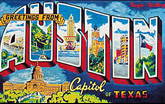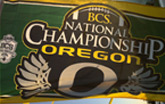Tasting microbrews Part 1.
Posted by msdesign21 | Posted in You trippin! | Posted on 24-09-2010
Tags: beer, taste
0

As we were driving yesterday it occurred to me that we are constantly posting about all our tastings but we’ve rarely gone into what we’ve learned about beer tastings and what makes up different types of brews. Well, interested or not, this post is going to delve into it. People always ask us, “what is your favorite kind of beer?” And our answer usually is “the better question would be: which ones aren’t!”. It’s not to say that we like all beers but there are certain things we have learned to look for in a brew and even if we aren’t the biggest hop fans we can typically appreciate what say, an IPA, is trying to do.
A bit of background: Our last 2 years in Lawrence we joined the Lawrence Home Brewers Guild and Brian started doing a few batches of homebrew with our good buddy Dane. Once a month the group would meet, bring their own homebrews or other microbrews to share, and would have a blind tasting and then a seminar on a different topic each week, led by other guild members. It was a great opportunity to learn more about different types of beers, learn how to describe the beers we were tasting and ask questions to some very talented and knowledgeable home brewers. One specific seminar talked about tasting and the common flavors with each beer. I have yet to be schooled on the proper wine tasting techniques but I imagine the process is similar.
Please know, we don’t claim to be experts, rather still learning, so I will reference other websites to make sure what I am saying is correct! Part 1 is going to teach you how to taste a beer looking towards BeerAdvocate.com post: 5 things to look for when tasting a beer. Part 2 will get into the different ingredients and types of beer that will help inform how to taste and what it is that you are tasting.
How to Taste a Beer (according to BeerAdvocate.com)

1. Appearance – this includes the color of the beer, lighter beers such as a lager or pilsner will typically be light yellow in color versus a brown, porter or stout, which will be the darkest beers you will sample ranging from brown to black. You should look for clarity of the beer, if it is light and foggy it could be unfiltered, also look at the carbonation and the head of the beer, if you are trying a porter or a stout and it’s soft and foamy on the top, there is a good chance it was poured from a nitro tap. This is our favorite kind of beer, normally keg beer is served from a tap pressurized by CO2, but if you find a nitro tap you will notice “a rich tight head and a less carbonated taste. This makes the beer feel smooth on the palate and gives a foamy appearance” like a Guinness. [Wikipedia on Draught Beer]
2. Aroma – to smell a beer, really smell it, you should get your entire nose in the glass as well as your top lip, open your mouth a bit and inhale through your nose and mouth at the same time. Breathing in with your mouth gives you two senses working together at once to really get a full understanding of the beer. Notice the different ingredients of a beer, malts, hops and yeast that will play into different types of aromas. “Malts (will be) sweet, roasty, smoky, toasty, chocolaty, nutty, caramelly, biscuity. Hops (you may notice) dank / resiny, herbal, perfumy, spicy, leafy, grassy, floral, piney, or citrusy. Yeast will also create aromas. You might get fruity or flowery aromas (esters) from ales and very clean aromas from lagers, which will allow the malt and hop subtleties to pull through.” [BeerAdvocate]
3. Taste – the best part!! Most of how you describe the smell will be the same way you will describe the taste. The one thing that will stand out in taste from smell is the body of the beer. How does the weight feel? Thicker, thinner, carbonated, smooth, these types of descriptions may come to mind. You should also try to notice how the flavor evolves. From the first part of your sip all the way through the aftertaste of a beer will influence whether you like it or not. Some of the most evolving beers we’ve tasted will be the IPA’s generally full of different kinds of hops that will start bitter and sharp and end earthy and green tasting. Temperature has a huge influence on taste. If you are a domestic drinker, Bud Light, Miller Lite, (which by the way is not a bad thing, we will enjoy a PBR or a Miller lite with the best of them!) you will notice that the beer is always served very cold to hide the fact that there is no flavor, which again, is not a bad thing, this is typical for a pilsner and how a pilsner should taste. If you are a newcomer to microbrews the first thing you might notice when you taste a beer is it is a bit warmer than you are used to. I remember the first FreeState beer I had, I wondered why the hell it was so warm and now I’ve come to appreciate and almost demand it when tasting certain types of beers. “Try around 40-50 degrees F for paler or lower alcohol beers, and 50-60 degrees F for darker or higher alcohol beers.” [BeerAdvocate.com] For more information than you will probably ever want to know on beer temperature, check out this website I found.
Here is a handy flavor wheel diagram that breaks down the entire tasting experience in common categories.
4. Mouthfeel – I guess I jumped a little ahead of myself when describing weight with taste as BeerAdvocate.com give this it’s own category. They give us more adjectives though, to help describe: “Light, heavy, chewy, thin / watery, smooth or coarse? Was the beer flat, over-carbonated?”
5. Drinkability – BeerAdvocates final evaluation: “The beer’s overall ease of consumption and your overall impression of the beer. Would you have another?” This is an important factor. I typically would say my favorite beers are browns, porters or stouts, but there are so many different ways to make these types of beers, with malts that are smoky or chocolaty or caramel-like for example, that will make one brown completely different from another. My favorite brown ever tasted? Nebraska Brewing Company, Nut Brown Ale. mmmmmmmm
So there you have it, now you know how to taste a beer. Enjoy and thanks for following!!








